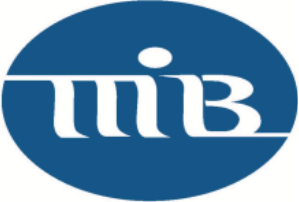I’ll let you in on a secret: sometimes your columnist runs out of new ideas to cover. A dearth of new products, no new regs, a stable rate environment – all of these can cause a writer to run aground while sailing the financial seas in search of material.
Then it dawns on me: I’ve never covered Treasury securities! For the most part, you should be glad. Over the last quarter century, this sector has gradually receded into the background of bank portfolio management as community bankers everywhere have been on the hunt for higher returns. For all of Treasuries’ built-in benefits, there’s the fact that they yield less than anything else on your brokers’ offering menus. While the Treasury yield curve is the basis from which your entire balance sheet is priced, as investments, they’ve been, at best, an afterthought.
United States Treasuries historical role
So why am I bothering to cover a sector that community banks don’t own? There’s more to this story than meets the eye, and besides, it’s possible the readers have forgotten some of the more salient points. Being the master of the obvious, I’ll point out that Treasuries have unmatched credit quality and liquidity. There are other features that portfolio managers like, such as the fact that an investor can pick virtually any maturity out to 30 years and that small block sizes trade at virtually the same prices as large blocks. There was also a time and place when bank investment portfolios regularly contained Treasuries.
If we were to look back a generation, we’d see that mortgage-backed securities (MBS) in particular weren’t highly represented. Several factors working in concert have changed the attitudes and objectives of portfolio managers. First, the long-term trend toward lower interest rates since the 1980s has contributed to smaller net interest margins, hence the urgency for incremental yield. Secondly, investors of all stripes, and community banks, in particular, have made it their business to be more sophisticated in their understanding of available options. Thirdly, MBS underwriters have continued to bring new products to market, many of which are coveted by bank portfolio managers. Two examples are Collateralized Mortgage Obligations (CMOs) and “prepayment friction” MBS. The typical community bank’s bond portfolio now has the majority of its investments in the mortgage security category.
What changed in 2021?
So why now are community banks reverting to old practices at a time when nominal rates are still low and loan demand is tepid at best? As you may have heard, yield spreads on traditional investments are at an all-time low. For example, if a banker purchases a simple five-year agency bond, they can expect to get three basis points (0.03%) more yield than the five-year Treasury note. In the not-too-distant past, that spread would have been 15 to 20 basis points.
As to why the incremental yield is so hard to come by, the simple explanation is that supply/demand is at work. The still-massive amounts of uninvested cash in the banking system, chasing supplies of bank-suitable bonds that aren’t growing much, if at all, have resulted in narrowing spreads. I, for one, certainly wouldn’t relish the notion of buying an agency bond versus a Treasury at these levels. In 2021, around 40% of the government-backed bonds which community banks purchased were Treasuries, according to Vining Sparks. That is by far the highest amount in decades.
Hoped-for outcomes
So what is the endgame for this strategy? Certainly, a bond portfolio stuffed full of zero-percent risk-weighted bonds that have no optionality really isn’t a recipe for outperforming one’s peers.
There are several possibilities. One is that yield spreads widen, if not to 1990s levels, then at least to 2010s. When that happens, the most efficient bonds swaps of all time can be executed: sell a Treasury, and buy an identical-duration agency, MBS, or municipal bond. Another outcome is that the Treasury yield curve flattens (which nearly always happens when the Fed hikes rates), and the total returns on the longer Treasuries in the portfolio actually hold up very well. Most optimistically, loan demand shows up, and the investor can dump the Treasuries in short order and turn them into much higher-yielding credits.
So there you have it. If you have recently considered buying Treasuries in lieu of the more traditional sectors, given the paltry incremental rewards, just know that you’d be in good company. And with any luck, you are finished reading about the wonders of U.S. Treasury securities for the next 20 years.
2022 Webinar Series Will Commence Soon
ICBA Securities and its exclusive broker Vining Sparks will again present a seven-part webinar series, Community Banking Matters. The first event is February 22 at 10 a.m. Central. CPE credit of one hour is offered for each webinar. For more information, visit viningsparks.com.
Jim Reber (jreber@icbasecurities.com) is president and CEO of ICBA Securities, ICBA’s institutional, fixed-income broker-dealer for community banks.











